Features
You'll Go Over Like A...
Led Zeppelin Albums Ranked Worst To Best
by Benjamin Ray
I grew up steeped in Led Zeppelin and that unabashed fandom has only increased with time. As each year passes, the catalog of the copycats grows more dated while the resonance and power of Zeppelin’s rock, blues and folk deepens. Because I embrace the depth of the band’s catalog, I offer a more unbiased opinion than fans who came on board with the radio hits. Therefore, allow me to present a fair and honest assessment of the band’s nine studio albums, ranked in order from worst to best. This may surprise some of you, but as long as it brings about discussion, it’s all worth it. A link to the Vault’s Zeppelin page can be found here.
9. Coda (1982)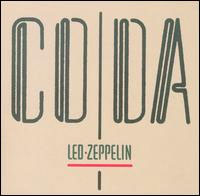
Obviously, this one ranks at the bottom among pretty much all fans and critics. There are gems to be found, but there’s a reason this material didn’t make the A-list. For the faithful only.
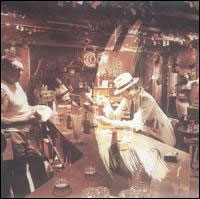 8. In Through The Out Door (1979)
8. In Through The Out Door (1979)
Personal demons and tragedies, not to mention the rise of punk, disco and subtlety-free arena rock, had pretty much sidelined Zeppelin by the end of the 1970s. Their final studio album was a last grasp at greatness, and it balances poignancy (“All My Love”), humor (“Hot Dog”) and a hint of pop (“Fool In The Rain”). But “In The Evening” remains a depressing, plodding album opener that only serves as a reminder of how far they had fallen.
7. Led Zeppelin II (1969)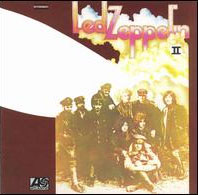
I know, everyone has been taught to believe this is one of the great rock albums of all time. It’s good, but why it tops the lists in favor of better albums is beyond me. Recorded mostly on the road on tour, subpar material like “The Lemon Song,” the drum solo “Moby Dick” and the substandard “Living Loving Maid” and “Bring It On Home” do not hold up to repeated plays. “Heartbreaker” and “Thank You” remain the highlights, and while the midsection of “Whole Lotta Love” may have been Jimmy Page’s production triumph to that point, it truly drags down an otherwise killer rock song.
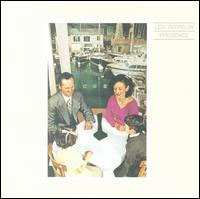 6. Presence (1976)
6. Presence (1976)
Ranked so high because of “Achilles’ Last Stand,” the last true epic the band produced and a perfect summation of all that made them mighty. “Tea For One” is the flip side, a nine-minute blues workout where you can feel the ache in every band member’s heart. The rest is along the same lines as In Through The Out Door, with only the decadent “For Your Life” having true staying power.
5. Led Zeppelin (1969)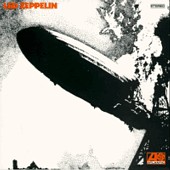
Two plodding blues covers, the overlong second section of “How Many More Times” and “Your Time Is Gonna Come” are the debut’s weaknesses. “Dazed And Confused,” “Babe I’m Gonna Leave You,” the first half of “How Many More Times,” “Communication Breakdown” and “Good Times Bad Times” are among the band’s best songs. This dichotomy is standard for a debut, even if Page was ahead of his peers in both production and guitar thunder.
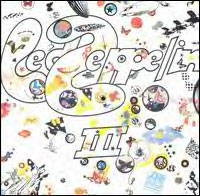 4. Led Zeppelin III (1970)
4. Led Zeppelin III (1970)
This is the moment that the band really stretched out musically and vaulted itself into its legendary status, simply because it showed range, power, and influences that had coalesced into a signature voice. “Immigrant Song” kicks like a mule to this day, the eerie, slippery “Friends” is often overlooked and “Since I’ve Been Lovin’ You” shows how far their version of the blues had come in just two years. Yet it is the acoustic second side that truly shines, from the driving folk of “Gallows Pole” to the lovely “Tangerine” to the intricate picking of “Bron-Yr-Aur Stomp” to “That’s The Way,” a song with such charisma and deliberate evocation that it is worth rediscovering. Like, now. I’ll wait.
3. Led Zeppelin IV (1971)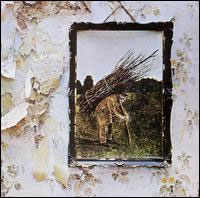
The untitled fourth disc: part of the Holy Trinity of British Rock in 1971 and an enduring classic. Six of the eight songs are superb; only the stop-start jerk of “Black Dog” and the mediocre “Four Sticks” are a notch below the rest. “Stairway To Heaven” and “Rock And Roll” are mighty achievements, as we all know, while the funny, swinging “Misty Mountain Hop” and the mandolin-folk of “The Battle Of Evermore” add yet more dynamics to the Zeppelin sound. However, “When The Levee Breaks” is the true classic, a wailing, volcanic, hypnotic masterpiece of blues emotion and studio wizardry that creates a profound, transcendent piece of music.
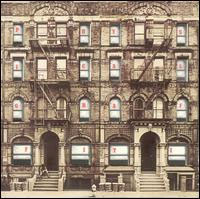 2. Physical Graffiti (1975)
2. Physical Graffiti (1975)
By 1975, Zeppelin could do anything they wanted, and what they wanted was to go big. The padding necessary to do this means some vault-clearing, but these “lesser” songs serve as good bridges between the strong ones. And this disc is absolutely packed with fantastic rock songs, from the band’s calling card “Kashmir” to the stomping, gyrating “Trampled Underfoot” (one of the band’s best songs, period) to the mystical “In The Light” to the intricate “Ten Years Gone,” a song only Page was capable of writing at that point. Thundering swagger, gentle beauty, soul-searching world traveling all rolled into one, this is not only Zeppelin’s final masterpiece but one of the great hard rock albums of the decade.
1. Houses Of The Holy (1973)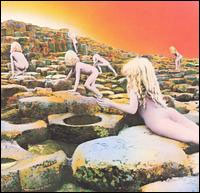
Combining everything right about the first four albums, Zeppelin wrote its masterpiece in 1973. As always, the music is a fearless combination of genres, including funk and reggae influences (none of which approach authenticity, of course) and the blues take a backseat here. The majesty and confidence of “The Rain Song” is a triumph, while the restrained, spooky “No Quarter” is John Paul Jones’ finest moment on record. “Dancing Days” and “The Song Remains The Same” are teeth-rattling guitar workouts, offset by the bouncy acoustic metal “Over The Hills and Far Away.” The lyrics of “The Crunge” are pretty bad, sure, but only “D’yer Mak’er” is second-rate, even if it breaks up the flow nicely. The sum total adds up to Zeppelin’s best album.